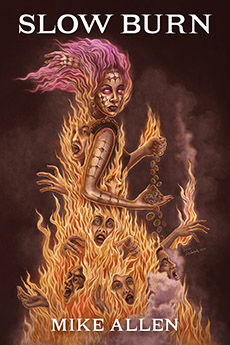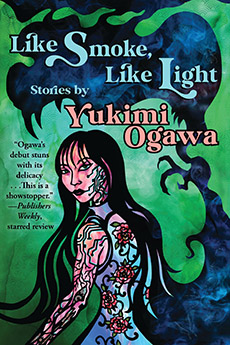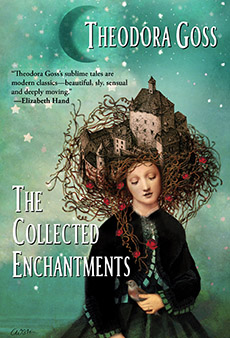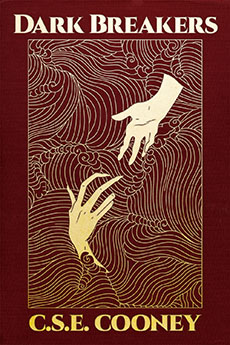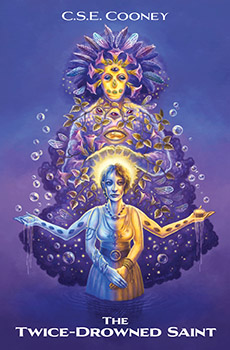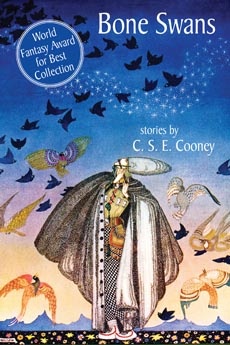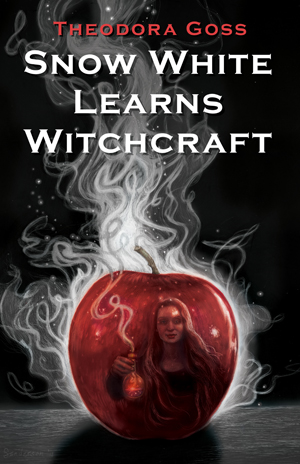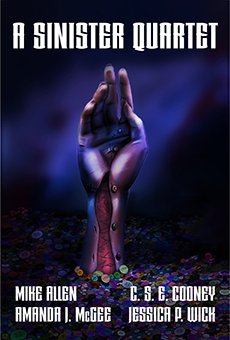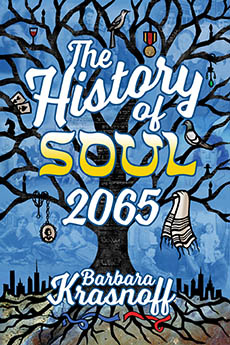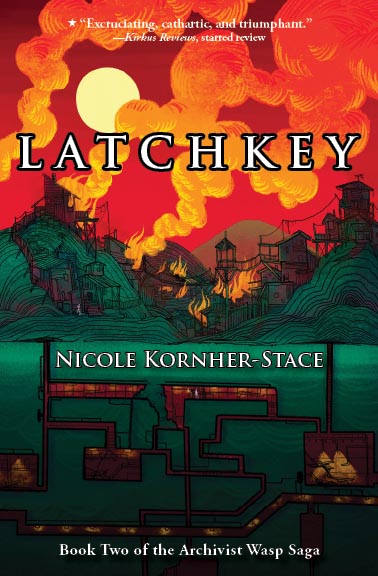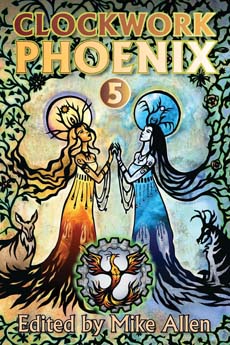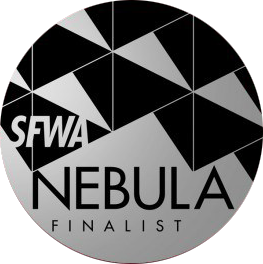Myths & Delusions • Editorial • April 2018
Twenty years.
It’s astonishing to me, reflecting on where I was in life when I made the decision to start Mythic Delirium, back in the wilderness of 1997, that this little zine has stayed with me for two decades. (Longer, if you consider I first came up with the name in 1991, before I graduated from Virginia Tech.)
It’s cause for celebration. This little zine’s history has entwined quite a number of surprise twists and delightful developments.
This issue, technically number 4.4 by the system I’ve used to distinguish the digital incarnation from its print predecessor, is the 20th since Mythic Delirium became a web and ebook publication, marking the end of five years for that phase of the project, believe it or not! The print version of Mythic Delirium encompassed 30 issues total, so that makes this issue the 50th overall. And, the very first issue of Mythic Delirium appeared in spring 1998, printed in a teeny apartment on a cheap inkjet printer that wasn’t at all up to the task. (Here’s what a bargain-basement production it was: as each printer cartridge quickly ran out of ink, I would take it back to the chain where I bought it—but to a different store each time—and return it as defective so I could get a free replacement, until the print run was finished.)
Humble origins for a journal that would go on to showcase the likes of Amal El-Mohtar, Neil Gaiman, Ursula K. Le Guin, Ken Liu, Jane Yolen (and many, many more) and publish five Rhysling Award-winning poems. The me of 1998 certainly wouldn’t have seen all that coming.
For some, this celebration is going to be bittersweet. With this issue, a landmark for this journal in multiple enumerations, I’m putting Mythic Delirium on what those of us in Smallpressville call “indefinite hiatus.” Put more plainly, the zine is coming to an end—though I reserve the right to bring it back, should the course of my career deliver me to a point where (re)starting a magazine feels like the right thing to do.
Reader, if you’re among the mere handful of subscribers whose subscription paid directly to me goes beyond this issue, I’ll be in touch via e-mail about your options. While Mythic Delirium ends, Mythic Delirium Books continues with a vengeance, and you remaining subscribers have an option on early e-copies of new books I have in the works. If you’re among the equally tiny number of subscribers through Weightless Books, you’ll get what’s left of your subscription refunded. If you’re among the quadruple handful of Amazon Kindle subscribers, I frankly am not quite sure how that’s going to work—I suggest you cancel through Amazon. Anyone with any questions can reach me at mythicdelirium[at]gmail[dot]com. And bless all of you for your support!
The paragraph above should tell you, from one narrow angle, why the zine is ending. But that’s not quite the full picture.
I have never tried to push Mythic Delirium toward the heights achieved by Jason Sizemore at Apex Magazine or Scott Andrews at Beneath Ceaseless Skies, to cite just two of several awe-inspiring examples. I’ve always kept the zine small scale because, though I wanted make a contribution to the field as an editor, I never, ever intended to give up writing in favor of editing.
My humble standard for Mythic Delirium was that it needed to support itself. I wasn’t going to pour money into it that Anita and I didn’t have. With that standard as the barrier to jump, the zine nearly ended at Issue 2, Issue 12, Issue 20, and Issue 30. But, amazingly, wonderfully, unforeseen circumstances conspired again and again to keep it going. (See the timeline below.)
The digital incarnation of the zine has been a different beast from the beginning, though. Though I’m proud of all the stories and poems I’ve been able to showcase these five years, the “infrastructure” of the zine, if you will, worked quite differently from the print version, which sailed and bailed water and sailed and sunk based on a small, fluctuating, gradually dwindling number of traditional subscriptions. The digital zine essentially lived as a side project generated by the Kickstarter campaigns for the Clockwork Phoenix anthologies. So, from my perspective, this moment has been looming large as the Westeros Wall for years, visible from a long distance off.
The other members of the team (my wife Anita, and volunteers Francesca Forrest and Christina Sng) have been in on this for a while now, and all have been gracious, though Anita has expressed sorrow (but also understanding) at seeing this venture end. I’m sure grateful for all their hard work that made this zine a better thing than I ever could have produced on my lonesome.
Last spring, all the two-year subscriptions offered as rewards in 2015 through the Clockwork Phoenix 5 Kickstarter expired, and very few renewed beyond that point. Anita and I had already decided we were not ready to attempt a new Kickstarter to fund a Clockwork Phoenix 6. (We still aren’t. If we do another one, it won’t be for a couple years yet, at least.)
Over that same period, some startling things happened. Working closely with our good friend Elizabeth Campbell, a bedrock supporter of Clockwork Phoenix, we released Unseaming, my debut collection of short stories. It went on to become my best-selling book to date. (Not a bestseller! But my best-selling book by a long shot.) As an experiment, Anita and I next published Bone Swans by C.S.E. Cooney, in part to see if we could replicate the things that went right with Unseaming. It turned out we could and we did. This guided us toward pursuing a new (to us) and different kind of publishing project, one that doesn’t require crowdfunding to be successful.
Unseaming also led to more demand (compared to what existed before!) for my own fiction and desire on my part to push that side of my creative life harder—and I confess, the obligations of producing a quarterly zine in five formats at last presented direct, frustrating interference, even at its relatively small scale.
The crux came with a suggestion by a well-meaning fellow editor. It should be relatively easy, they said, to rebuild support for Mythic Delirium through Patreon. Weighing that option, I realized that the only reason I would want to go through the trouble of setting up a Patreon campaign, with all the requirements of creating and meeting its reward levels and promoting it regularly over social media, would be if it was going to support my writing—not take even more time away from it. With that epiphany, I at last reached Bartleby’s choice: I would prefer not to.
That decision made, my goal became, with this issue, to ringmaster a spectacular show that would serve as a triumphant final bow.
When Anita and I went to Worldcon 75 in Helsinki and scouted the art show for covers, we picked Hjalmar Wåhlin’s wistful “Heaven at Last” for precisely this purpose: to convey a moving, joyful leave-taking, a magical sendoff. The real story behind Hjalmar’s piece is infinitely more touching, as it portrays his imagining of a reunion with his father, who died of cancer.
This issue doubles our usual number of stories, and unlike before, we’re releasing them online all at once instead of parceling them out over three months (a scheme that, if I had the option of a do-over, I would probably abandon).
Edith Hope Bishop returns to our pages with “The Sky Watcher,” a gentle fable for our times, while A.T. Greenblatt joins Mythic Delirium for the first time with “Graffiti Guardians,” a fearsome tale of standing up for what you love through art. Kate MacLeod’s “Sword and Tattoo” examines the courage that inspires a reckoning with the past. In “Red as Water, White as Ruin,” Benjanun Sriduangkaew offers a gorgeous blend of science fiction and horror. I’d bet that post-apocalyptic “Mothers, Watch Over Me” by Maria Haskins won’t leave a single dry eye in the house by the time its turn on the stage is finished. “Medved the Hamster” by Janna Layton observes human follies and foibles through an absurd lens.
Virginia M. Mohlere rejoins us with “Cardiad,” a wistful and mythic poem from the heart. “Libitina’s Garden” by Kyla Ward provides a trio of dark sonnets set in ancient Rome. “After Pandora” by Maya Chhabra suggests the true fate of Hope is different from what you might have expected. In “Glut of Norths: A Purgatory,” John Philip Johnson projects a haunting vision of horses and purpose. Peri Fae Blomquist’s stanzas grant us a look into the daily life of “Mother Giant,” and Davian Aw’s “This Is for the Times” finds a moment of peace in a universe of possibilities.
As I said above, once you’ve reached the end of the issue and the fall of the curtain, Mythic Delirium Books very much remains a live act. This summer, we’ll be releasing Latchkey, a new novel by Nicole Kornher-Stace, sequel to her much praised post-apocalyptic adventure Archivist Wasp, and there are even more projects in progress.
Also, there’s a thread left hanging, in that we still have the option to anthologize the last three years of material we’ve published in the zine. Should we end up at some point in the future tackling another big crowdfunding campaign, we might well decide to make constructive use of that option.
Finally, the archives for the digital zine, five years of top-notch treasures, will stay on our site for future explorers to discover and enjoy.
And now, one last time, the curtain rises.
—Mike Allen, Roanoke, Va., March 2018
Mythic Delirium timeline
Spring 1998: Mythic Delirium One appears, a new journal devoted to speculative poetry.
Fall 1998: Mythic Delirium Two appears. Given paltry subscription sales, dismissive reviews and an invitation from DNA Publications to join their volunteer editorial staff, I choose to put the zine on hiatus.
1999: In her introduction to The Year’s Best Fantasy and Horror, Ellen Datlow cites Mythic Delirium One as one of the best zine issues she read in 1998. DNA Publications owner Warren Lapine offers to add Mythic Delirium to DNA’s magazine stable.
2000: With Issue 3, Mythic Delirium becomes a sister zine of Weird Tales, Aboriginal Science Fiction, Absolute Magnitude, Dreams of Decadence, Pirate Writings (later Fantastic Stories of the Imagination) and Science Fiction Chronicle. First cover by Tim Mullins, who would end up providing the cover art for all but one of the subsequent print issues.
2001: First appearance by Sonya Taaffe, whose poetry would appear in all the subsequent print issues of Mythic Delirium and several digital issues.
2004: “Octavia Is Lost in the Hall of Masks” by Theodora Goss wins the Rhysling Award for best long poem.
2004–2005: Issues 11 and 12 showcase reprints from Ursula K. Le Guin’s collection Hard Words and Other Poems.
2005: An amicable parting of ways with DNA allows us to retain our subscribers. With Issue 13, Anita and I return to publishing the zine ourselves.
2006: Issue 14 becomes the first to be released under the Mythic Delirium Books imprint. In cooperation with Prime Books, we release the anthologies MYTHIC and MYTHIC 2.
2007: We publish In Deepspace Shadows, a science fiction play in verse by Kendall Evans.
2008: “Eating Light” by F.J. Bergmann wins the Rhysling Award for best short poem.
2009: “Song for an Ancient City” by Amal El-Mohtar wins the Rhysling Award for best short poem. Issue 20, the 10th anniversary issue, containing the original poem “Conjunctions” by Neil Gaiman and a special hand-colored illustration by Tim Mullins, becomes the single best-selling issue of the zine. Novelist and poet Francesca Forrest joins our volunteer staff as assistant copy editor.
2010: “In the Astronaut Asylum” by Kendall Evans and Samantha Henderson wins the Rhysling Award for long poem. The special “Goblin Delirium” issue appears, guest edited by Amal El-Mohtar and Jessica P. Wick, cofounders of Goblin Fruit.
2012: “The Library, After” by Shira Lipkin wins the Rhysling Award for long poem. As part of a plan to allow Mythic Delirium Books to take over the Clockwork Phoenix anthology series from original publisher Norilana Books, the Clockwork Phoenix 4 Kickstarter raises funds to launch a digital zine under the Mythic Delirium Books imprint. With that seed in place, we decide to end Mythic Delirium as a print zine and continue it as an e-zine. We also decide that the new version will include fiction as well as poetry, in the manner of the MYTHIC anthologies.
2013: The Mythic Delirium Kickstarter funds the digital zine for an additional two years. Mythic Delirium 0.1, the first issue of the digital zine, appears in June.
2014: Issue 30, the final print issue, appears, a retrospective edited by Anita. We publish the first Mythic Delirium anthology.
2015: The Clockwork Phoenix 5 Kickstarter raises two more years of subscriptions for Mythic Delirium, expiring in 2017. The Mythic Delirium: Volume Two anthology appears. Poet Christina Sng joins our volunteer staff as assistant digital editor.
2016: “The Absence of Words” by Swapna Kishore gets selected for The Year’s Best Dark Fantasy & Horror: 2016.
Spring 2018: Here we are.
![]()
If you’ve enjoyed what you’ve read, please consider pitching in to keep us going. Your donation goes toward future content.
![]()

